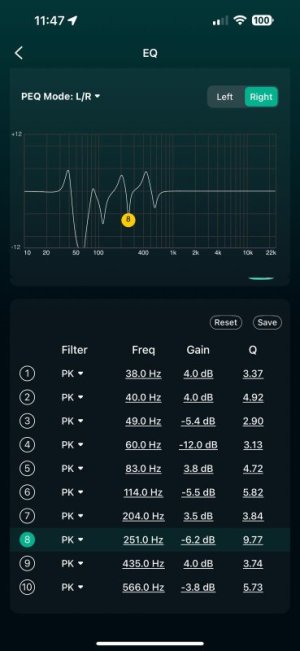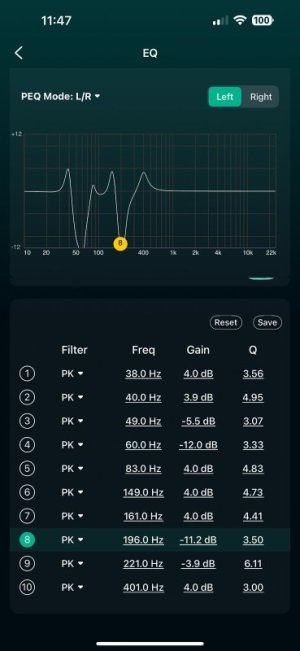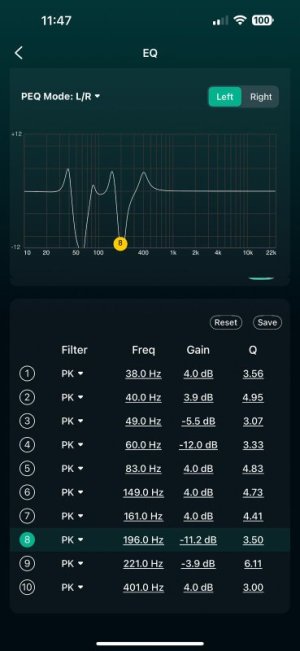Howdy!
Recently swapped my Polk XT15's for the Monitor Audio Bronze 100's, got them for a great price.
These are paired up with a Polk PSW10 10" sub, that's at 60% volume, and on my Wiim Amp set to -3db's, some of the bass is coming from the MA 100's.
The Room Correction is giving me rather thin PEQ's, that don't sound full - As a result, I kept the EQ on flat for now which feels and sounds like the best for now on the current kit I have.
I'm trying to find a PEQ for the Wiim Amp and MA Bronze 100's, but can't find anything, and hoped someone here has a basic PEQ to start off with, bands that I can maybe start with as a baseline?
Thanks
Recently swapped my Polk XT15's for the Monitor Audio Bronze 100's, got them for a great price.
These are paired up with a Polk PSW10 10" sub, that's at 60% volume, and on my Wiim Amp set to -3db's, some of the bass is coming from the MA 100's.
The Room Correction is giving me rather thin PEQ's, that don't sound full - As a result, I kept the EQ on flat for now which feels and sounds like the best for now on the current kit I have.
I'm trying to find a PEQ for the Wiim Amp and MA Bronze 100's, but can't find anything, and hoped someone here has a basic PEQ to start off with, bands that I can maybe start with as a baseline?
Thanks







